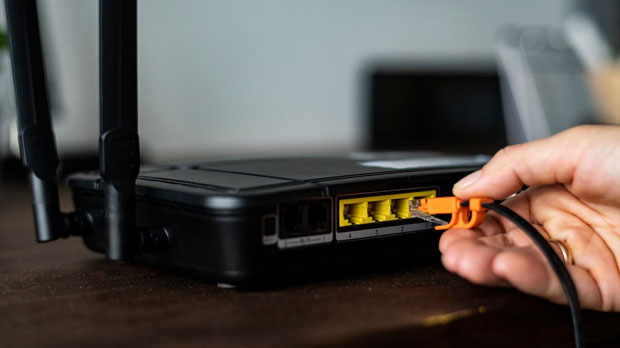In today's digital age, maintaining online privacy has become an increasing concern for many individuals. As personal data is constantly being collected, tracked, and sometimes exploited, various tools and services have emerged to help users protect their online identity. One such service is the socks5 proxy. Many people turn to free online socks5 proxies with the hope of enhancing their internet privacy. However, is it effective? Can these free services truly safeguard your data and online activities, or do they introduce more risks than benefits? In this article, we will explore whether free SOCKS5 proxies can improve internet privacy, examining their benefits, potential risks, and overall effectiveness. What Is a SOCKS5 Proxy?A SOCKS5 proxy is a type of internet protocol that allows users to route their internet traffic through an intermediary server. This server forwards requests to the destination server, hiding the user's real IP address in the process. SOCKS5 stands out for its flexibility, as it can support various types of traffic, including web browsing, file transfers, and gaming, without requiring users to modify their applications or use specialized software.Unlike traditional HTTP proxies, SOCKS5 proxies do not modify or inspect the data being transferred. This allows for better privacy and less chance of data leakage. SOCKS5 is often preferred by users looking to mask their identity or circumvent geo-restrictions.Can Free Online SOCKS5 Proxies Improve Your Privacy?When considering using free online SOCKS5 proxies, it’s important to first understand their potential advantages and limitations in improving online privacy. Many users choose free proxies in hopes of avoiding paying for premium privacy services. Let’s break down the aspects to evaluate:Advantages of Free SOCKS5 Proxies1. Anonymity: A SOCKS5 proxy helps mask your IP address, making it harder for websites and services to track your real identity or location. By routing your traffic through a proxy server, your browsing habits and activities become less identifiable.2. Circumvention of Geo-Restrictions: Many people use proxies to bypass geo-restrictions and access content available in different countries. SOCKS5 proxies are particularly useful for this purpose, as they allow you to simulate access from a specific location, giving you access to restricted websites or services.3. Encryption Support: Although SOCKS5 itself does not offer encryption, many proxy servers offer additional encryption features. When used in conjunction with encryption, SOCKS5 can help improve the security of your data.4. Cost-Free: For users who are on a budget, free SOCKS5 proxies may seem like an appealing option. There is no need to commit to a paid subscription, and you can still experience the basic features of a proxy service, such as IP masking and location switching.Risks and Limitations of Free SOCKS5 ProxiesWhile free SOCKS5 proxies offer some advantages, there are several key risks and limitations that users should be aware of when considering them for privacy purposes:1. Privacy Risks: The major concern with free SOCKS5 proxies is the lack of trustworthiness. Since these services are free, they may be operated by malicious entities seeking to collect user data, monitor internet activity, or inject malicious code. Free proxy services often have no clear privacy policies or terms of use, and their primary goal may be to gather information about users for financial or advertising purposes. This completely undermines any potential privacy benefits.2. Data Logging and Leaks: Even if a free socks5 proxy claims to provide anonymity, many services log user data, including browsing history, IP addresses, and other identifiable information. Additionally, some proxies suffer from DNS leaks or WebRTC leaks, which can reveal your real IP address, defeating the purpose of using the proxy in the first place. Without proper encryption, your internet activities may be exposed to third parties.3. Limited Security Features: Free SOCKS5 proxies typically do not offer strong security features like encryption. Although the proxy itself can mask your IP, it may not protect the actual content of your traffic. Without encryption, sensitive data (like passwords, personal details, and financial information) can still be intercepted by hackers or eavesdroppers.4. Unreliable Performance: Many free proxy services suffer from slow speeds, inconsistent connections, and high latency. These issues can significantly impact your internet browsing experience, making activities like streaming, online gaming, or even basic browsing difficult. Slow performance also increases the likelihood of disconnections, which could further compromise privacy and security.5. Exposure to Malware: Free proxies, especially those that are not well-known or maintained, may serve as a gateway for malware. Malicious code or software can be injected through free proxy servers, potentially exposing your device to security threats, including viruses, ransomware, and spyware.Comparing Free vs Paid SOCKS5 Proxies for PrivacyWhile free SOCKS5 proxies may appear to offer an easy solution for improving privacy, they often come with numerous caveats. Paid proxies, on the other hand, are typically more reliable and offer stronger privacy protections. Here’s a comparison between free and paid SOCKS5 proxies:1. Trustworthiness: Paid SOCKS5 proxies are more likely to have clear privacy policies and terms of service. Reputable paid proxy providers typically do not log your data, offering a higher level of trust and privacy compared to free services.2. Security: Paid proxies often provide encryption options to protect your data during transmission. In addition, they are more likely to implement additional security measures, such as DNS leak protection, to ensure that your real IP address is not exposed.3. Performance: Paid services generally offer better speeds, more stable connections, and better customer support. Free proxies may suffer from congestion due to high usage, which can lead to slow or unreliable connections.4. No Malicious Intent: Reputable paid proxy providers focus on privacy and security, whereas free proxy services may be motivated by profit, data collection, or other questionable practices.Is It Worth Using Free SOCKS5 Proxies for Privacy?Ultimately, the decision to use a free online SOCKS5 proxy to improve your internet privacy depends on your specific needs and the level of risk you are willing to take. While free proxies may provide some initial privacy benefits, they often fail to meet the necessary standards for a truly secure and private online experience. The risks associated with data logging, potential leaks, poor performance, and exposure to malware make them a less-than-ideal choice for users who are serious about protecting their privacy.If you are genuinely concerned about safeguarding your online activities, opting for a paid SOCKS5 proxy or another trusted privacy tool is likely a safer and more effective solution. Paid services provide greater security, better reliability, and a higher level of privacy protection, ensuring that your internet activities remain confidential and secure.ConclusionFree online SOCKS5 proxies may offer a basic solution for those looking to mask their IP addresses and bypass geo-restrictions. However, they come with significant risks to privacy and security, including data logging, malware exposure, and unreliable performance. For those seeking robust internet privacy protection, investing in a paid proxy service or alternative privacy solutions is generally a better choice. Free proxies, while cost-effective, often do not provide the level of protection necessary to keep your data secure in today’s digital landscape.
Jan 07, 2025
![arrow]()




























































